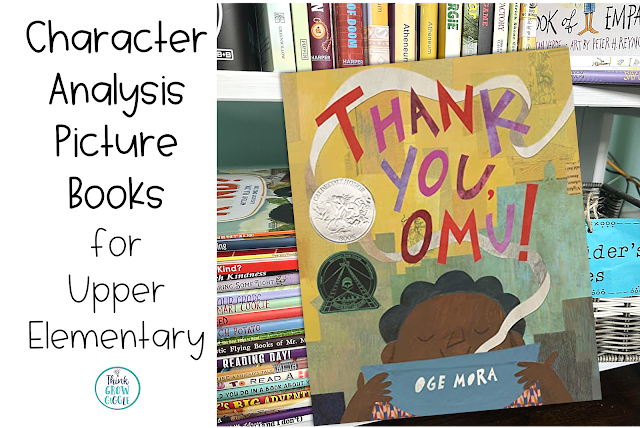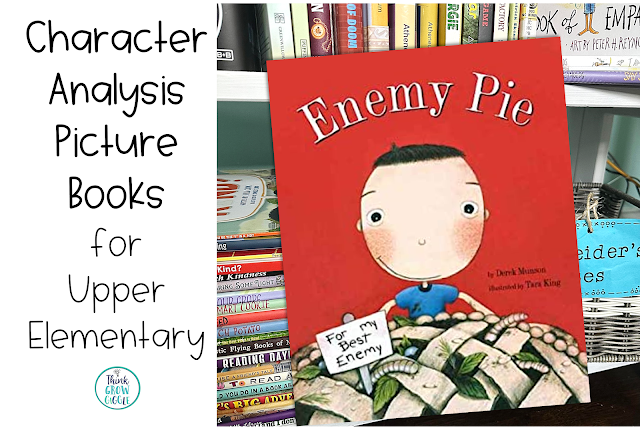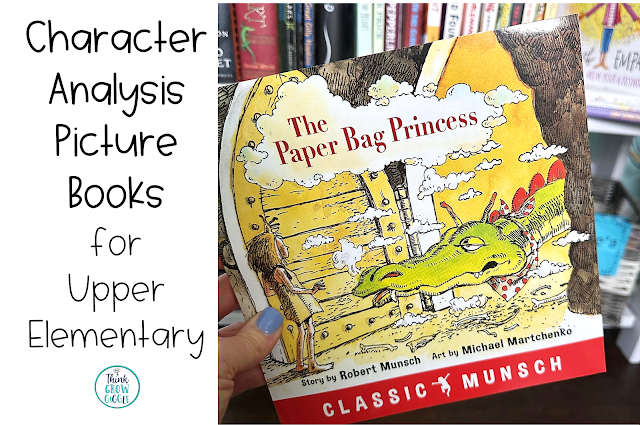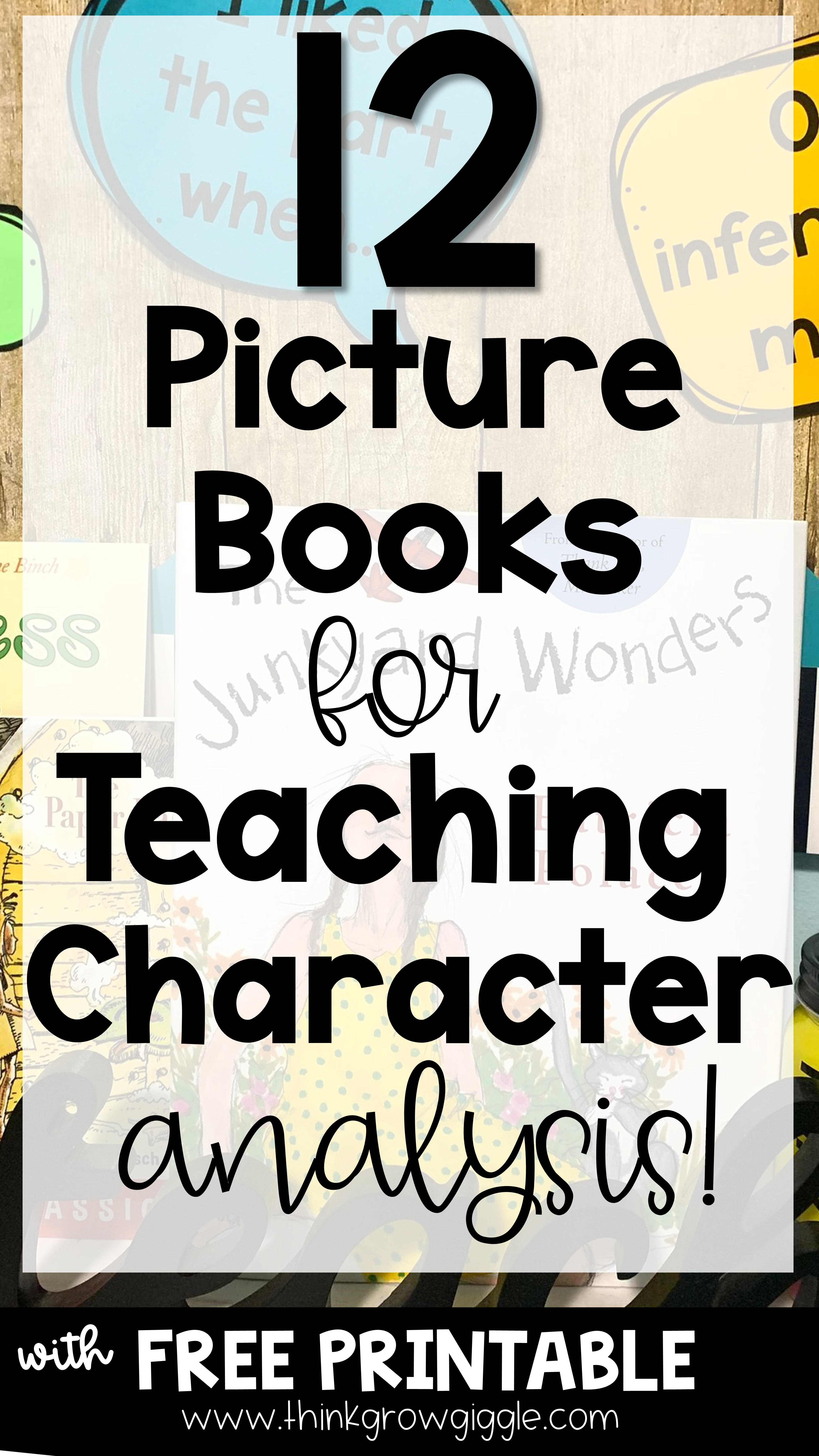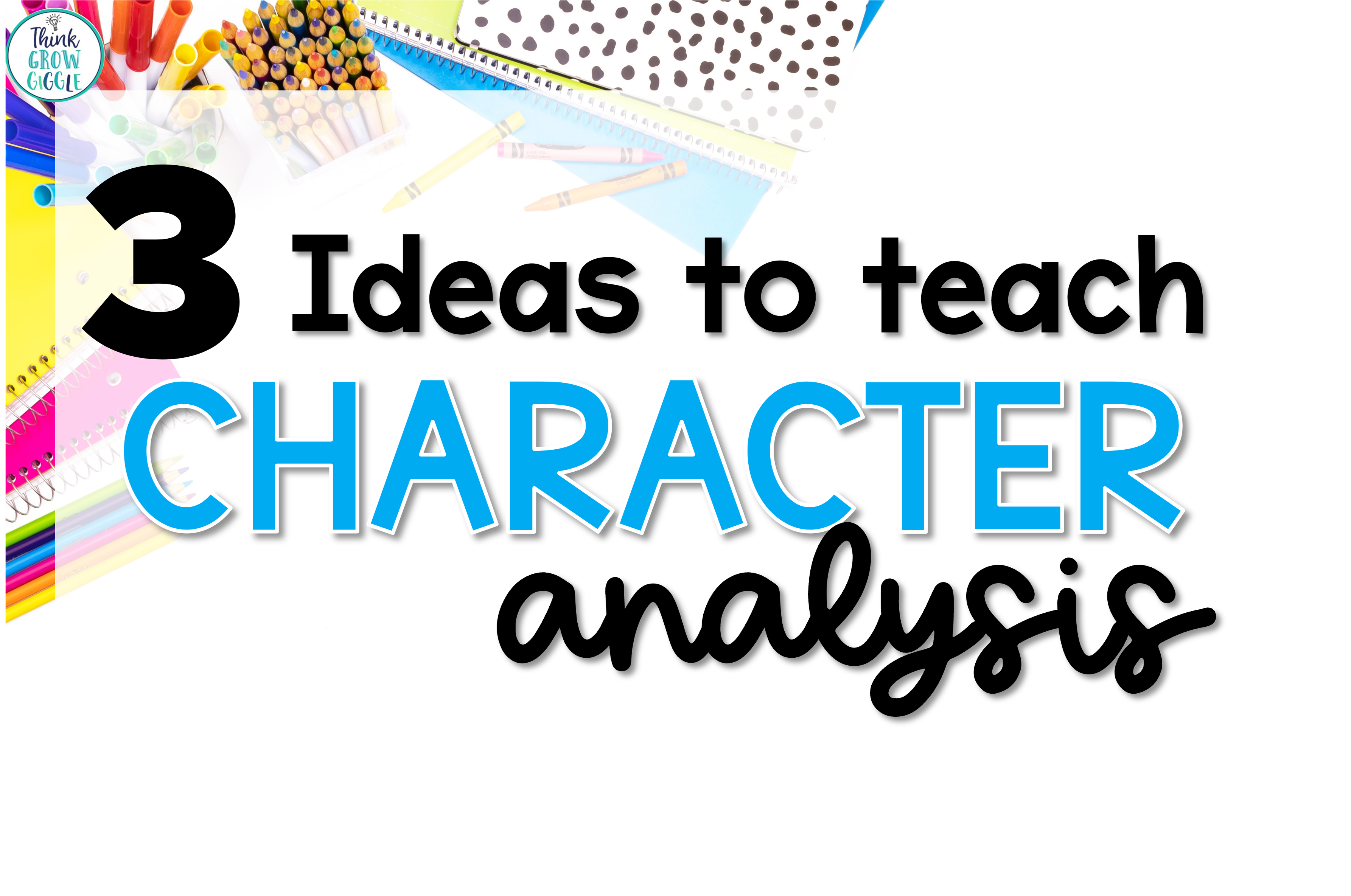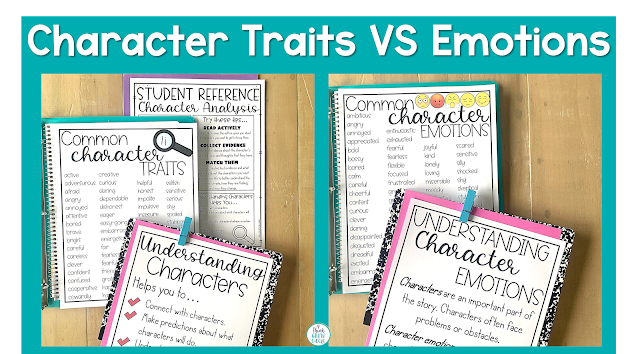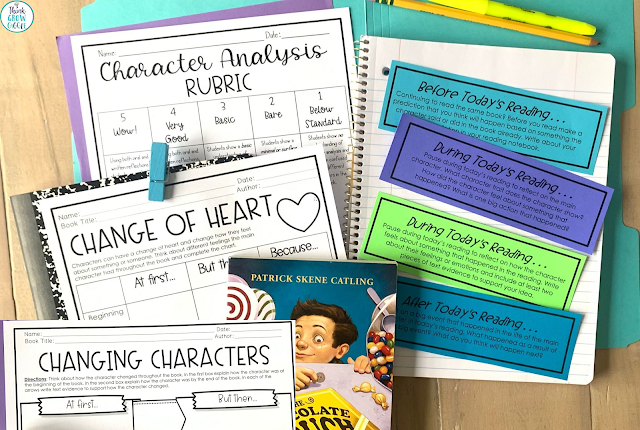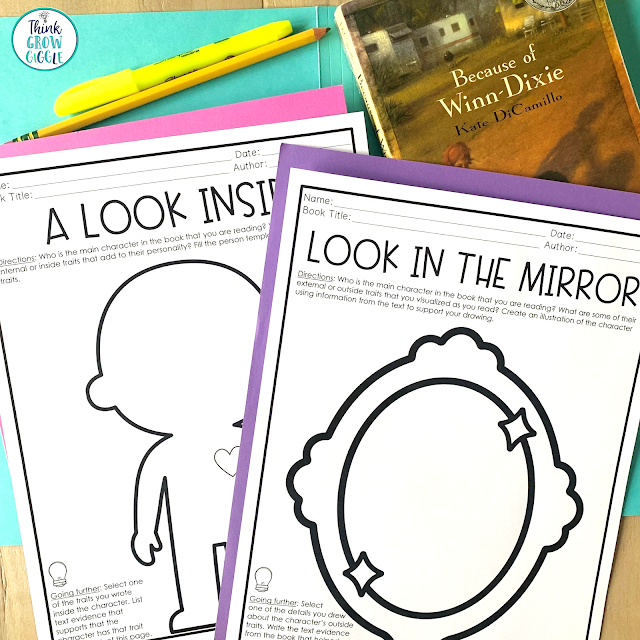When it comes to diving deep into analyzing characters, I found the best way to get started is with picture books!
Reading a variety of picture books gives students a chance to meet a wide range of characters with a variety of different character traits and emotions. Picture books also serve as a visual support of character traits, emotions, showing us how characters often change throughout stories. Character illustrations also help students analyze characters and differentiate between inside and outside character traits.
I love using previously read picture books to help us dive into character understanding. When you use previously read books, students can focus on the character since the story was already discussed and digested. As the character unit continues, we begin to read new stories and chapter books analyzing the new characters that we meet.
Over the years I have found that the following picture books work best when it comes to analyzing characters. The characters in these books give students a lot to think about as they read. Here are my favorites for character understanding with upper elementary students.
Read about my best tips for helping students analyze characters HERE.
1. A Bad Case of Stripes by David Shannon
This book is the best picture book to introduce students to the terms inside and outside character traits. (or internal or external traits) This story follows the main character Camilla Cream. On the inside she loves lima beans, but on the outside she does not act like she likes them. Because she keeps her true self a secret, her outside traits change each day. This is a fun read with a strong author's message to be yourself. It works perfectly for introducing character traits to your students.
Grab the free character analysis starter kit at the bottom of this post.
2. Brave Irene by William Steig
I love this story! This story is a great read-aloud to discuss character traits and emotions. The main character, Irene, is brave, and the author gives many supporting details to help students agree that she is brave. But Irene also has many feelings and emotions throughout the story. From feeling helpful to feeling frustrated, she has felt them all. Your students will cheer Irene on as they listen to this story. With all the supporting details in the story, this one is a great read aloud to also practice written responses about character traits and supporting text evidence.
3. The Raft by Jim LaMarche
This is one of my favorite picture books! I love using this one for understanding theme, end of the year read alouds and of course character understanding. This one is perfect for your lesson on changing characters. The main character in the story is mad when he finds out that he has to spend the entire summer with his grandmother at her cabin without technology. But by the time the summer ends, he has definitely changed. Create a class three column T-chart to use during a read aloud of this book to keep track of the character's traits and feelings at the beginning, during the middle, and then at the end. This will help students identify how the character has changed.
4. Knots on a Counting Rope by Bill Martin, Jr
I love this book, and so do the kids. The ending always surprises them when they find out the main character is blind. Rereading it a second time, knowing that he is blind, helps us to dive deep into character analysis. This one is also perfect for building vocabulary, using context clues, and inferring as readers.
Grab the free character analysis starter kit at the bottom of this post.
5. A Chair for My Mother by Vera Williams
This is a popular book with a simple yet powerful story! This book follows a family of women who lose everything they own and their home in a fire. Throughout the book, we learn about the characters' determination, caring and loving attitude toward each other, and helpful neighbors who all pitch in to help. There are so many great character traits and emotions to address with this one book!
6.
So many of Patricia Polacco's books are just perfect for character analysis, especially this one! This is a longer story that you should read over a few days. Doing so will give you the opportunity to revisit the text to discuss the main character and her character traits and emotions. This story follows Trisha who attends a new school and becomes called "the junkyard" a name designed to tease and mock her. Once she meets her teacher, things begin to change. Keep track of the Trish and her teacher's character traits, discussing each one and discovering how they both change. This is also a great book to lead to discussions about main characters and secondary characters.
7. Thank You, Omu by Oge Mora
This one is a new favorite for me! While this one has a gratitude theme and is often read around Thanksgiving, it is also perfect to revisit for character analysis. This book follows the day of Omu who spends the afternoon cooking. She can not help but share all of her soup with her community, leaving none for herself. Her selfless act inspires the community to help her in return. So much goodness and positivity in this book that you will want to read it again and again!
8. Nobody Hugs a Cactus by Carter Goodrich
While this story can be read any time of the year, it is a great pair with Valentine's Day because of the nature of a loving cactus who wants a hug. Hank, the main character, is a cactus that no one wants to hug. As the story goes on, Hank begins to change from being a loner to wanting a friend and companion. This story is great for learning about how and why characters change. The illustrations support Hank's feelings and emotions throughout the book, making it great for visual and auditory learners.
9. Enemy Pie by Derek Munson
This classic teacher favorite is perfect for teaching your students to predict and analyze how a character responds to a problem. This book follows the main character (not named) who begins to feel jealous when a new boy moves into town. the main character experiences different feelings and emotions, chats about them with his dad, and ends up changing by the last page. The kids LOVE this one and it is so easy to relate to. You can read and reread this book for different lessons including plot, climax, story structure, and making predictions.
10. CHAPTER BOOK Suggestion: Ramona Quimby, Age 8
If you are looking for a chapter book, perfect to discuss character traits and emotions, try Ramona Quimby, Age 8 by Beverly Cleary. Each chapter is filled with antics and fun to help the reader get to truly get to know the main character, Ramona. A fun activity to go along with a read aloud of this book, is to have the kids keep a journal as Ramona. It is a great way for the kids to have to figure out how the character is feeling and then write from her perspective.
Grab the FREE Character Analysis Starter Kit!
Need even more picture book suggestions? Try one of these:
- 11. The Paper Bag Princess by Robert Munsch
- 12. Ada Twist, Scientist by Andrea Beaty
- 13. Boundless Grace by Mary Hoffman
Before you begin your next character study grab a stack of picture books with interesting characters to help you dive deep into character analysis. Use a mix of previously read books and some new books, too! The groundwork you lay for character analysis with picture books will help your students carefully reflect and think about the characters that they meet in the books that they read.
You will also love reading:








